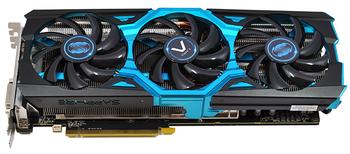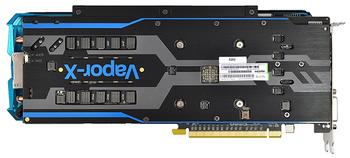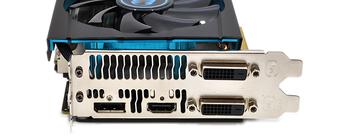Introduction
Double-down
AMD is today supplementing its high-end Radeon graphics with the release of the R9 290X 8GB card. The standard card, launched approximately a year ago, ships with 4GB of GDDR5 memory and remains an able competitor to the newer GeForce GTX 970 and GTX 980 GPUs from rival Nvidia.
Doubling the size of the already-large framebuffer is an interesting move because, even at a 4K resolution, performance limitations are better characterised by a lack of sheer rendering horsepower rather than being bound by the available memory footprint.
So if our benchmarked games aren't limited by the 4GB memory on the latest slew of high-end cards, does 8GB, and the extra costs associated with implementing it on a board, make sense?
AMD partner Sapphire attempted to steal a march on competitors by demonstrating an 8GB-equipped R9 290X Toxic back in March this year but it never made it to retail. Now, though, Sapphire is debuting a different model to coincide with the announcement of the larger-buffer card from AMD.
Known as the Vapor-X R9 290X 8GB and similar to the 4GB Tri-X OC version in both appearance and speed, the newer model is expected to retail at £360, or £70 more than the regular Vapor-X model. Such a premium puts it in the crosshairs of the cheapest GeForce GTX 980 cards, albeit equipped with a 4GB framebuffer.
The Sapphire Beastie
Build quality is very good throughout, with Sapphire using a metal shroud and a full-size backplate on the rear. And if size matters, you aren't being shortchanged: this beastie measures almost a full 12in long, tips the scales at 1,290g and is slightly thicker than your garden-variety dual-slot design.
Getting two of these cards running in CrossFire shouldn't be too much of a problem on a board with well-spaced PCIe slots, mind, but the sheer size of the 290X Vapor-X 8GB is worth bearing in mind if you're working within tighter confines.
Flipping the card over shows this isn't your average R9 290X. Sapphire has outfitted the Vapor-X with a 10-phase power design, Black Diamond chokes and a couple of other interesting features attached to the custom PCB.
Firstly there's the overhanging bit of circuit board at the top of the card - this small extension leaves a copper layer exposed and is attached directly to the heatsink. According to Sapphire, this alone is enough to shave 'several degrees' off core temperature.
Then there's the curious-looking on/off switch positioned at the end of the board. Turning it on activates what is dubbed 'Intelligent Fan Control' (IFC), which enables the two outer fans to turn off when temperatures are low, usually when pootling about in Windows. This makes the card audibly quieter during everyday use, as the trio of Tri-X fans only kick-in when gaming or running other GPU-intensive apps. Extreme gamers or overclockers wanting the fans on at all times can flip the IFC switch to off - a reboot isn't required. Good, simple thinking.
Sapphire adds a backlit button to the BIOS toggle switch, which allows users to choose between legacy and UEFI operating modes, and the Sapphire logo on the top of the card is not only backlit but temperature dependent. It'll glow blue when cool (60ºC or less), yellow when warm (60ºC to 80ºC) and red when toasty (80ºC or more). A nice little visual indicator, and though we'll cover operating temperatures in more detail later in the review, it's worth mentioning that we didn't see red at any point during our benchmarks.
These extras are all noteworthy additions and they don't detract from the cooler itself. This is one of Sapphire's top-tier solutions and the proof is what's lying underneath that massive shroud. Attached to the GPU is a vapour chamber that leads to five heatpipes - a 10mm central pipe flanked by two 8mm and two 6mm - and a board-encompassing stack of aluminium fins.
The hefty heatsink suggests a significant overclock, but that isn't the case. Sapphire ships this 290X Vapor-X with a 1,030MHz core (up from 1,000MHz) and the 8GB frame buffer running at an effective 5,500MHz (up from 5,00MHz). The speeds represent a halfway house between the two 4GB Vapor-X OC models in Sapphire's range.
Getting to the key point, Sapphire doubles the usual framebuffer by using 16 4Gbit SK hynix H5GQ4H24MFR-R2C memory chips instead of 16 2Gbit variants on the 4GB model. Doubling the density naturally leads to a larger framebuffer.
Driving the displays are a quartet of usual outputs encompassing two dual-link DVI, HDMI 1.4a and DisplayPort 1.2. Primed as a card for ultra-high-resolution gaming, only the DisplayPort 1.2 can be used to run a 4K screen at 60Hz; the HDMI is limited to 4K30 while DVI tops out at 2,560x1,600.
Big, bold and certainly a looker, let's find out if that 8GB framebuffer really does make sense.






